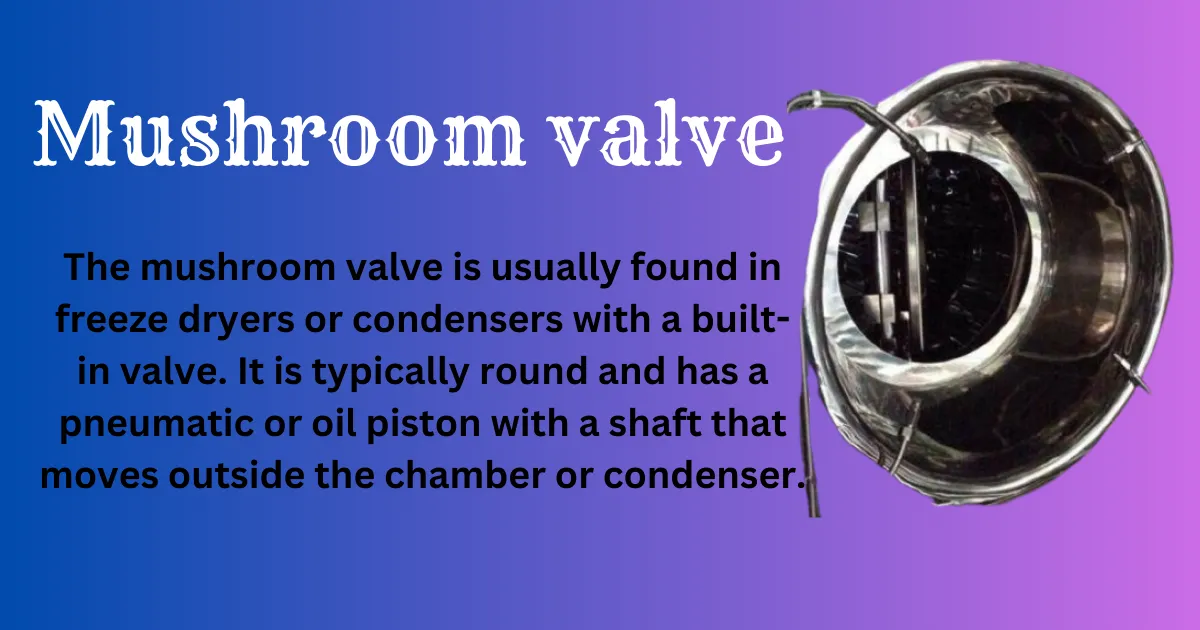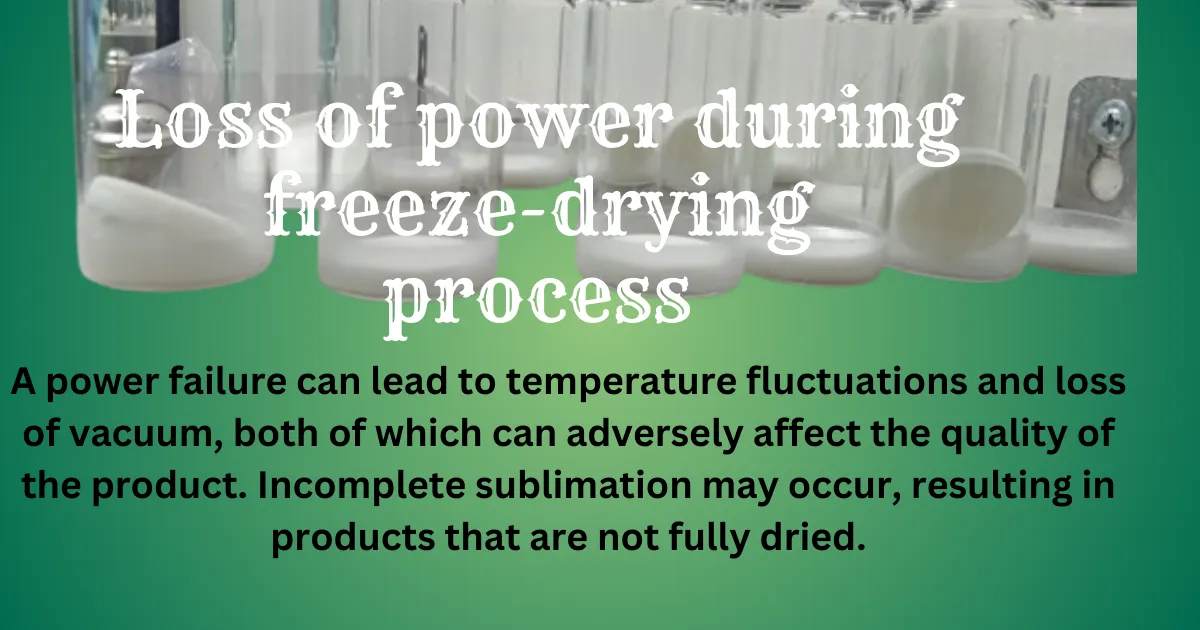Freeze-drying A complex procedure is used to remove moisture from perishable goods without compromising their structural integrity. This process, also known as lyophilization, is vital in various industries, including pharmaceuticals, food preservation, and biotechnology. But the power supply’s consistency during the procedure is crucial to the freeze-drying process’s effectiveness. In this article, we will explore what happens when there is a loss of power during the freeze-drying process and how to effectively respond to such a scenario.
Table of Contents
ToggleKey Takeaways
- Freeze-drying is a critical manufacturing process susceptible to power failures and other disruptions.
- Power loss can have severe consequences, including product loss, equipment damage, and regulatory compliance issues.
- Understanding the sequence of importance for maintaining critical components during a power outage is crucial for preserving the freeze-drying process.
- Redundancy in critical equipment, such as vacuum pumps, circulation pumps, and cooling systems, is essential to ensuring process continuity.
- Comprehensive contingency plans and backup power solutions are necessary to mitigate the impact of power failures on freeze-drying operations.
Understanding Freeze-Drying
What is Freeze-Drying?
Lyophilization, also known as freeze-drying, is a dehydration technique used to stabilize and store materials for long expiration date or long shelf life. The process includes freezing the product, decreasing the surrounding pressure, and extracting the ice with the help of sublimation.
The Science Behind Freeze-Drying
The foundation of the science of freeze-drying is the sublimation principle, which states that water can change directly from a solid (ice) to a vapor without going through a liquid phase. This is achieved by maintaining low temperatures and vacuum conditions.
The Importance of Power Stability in Freeze-Drying
Role of Power in Freeze-Drying
The freeze-drying process is highly dependent on a stable power supply. Power is required to maintain low temperatures and create and sustain vacuum conditions. And operate various mechanical and electrical components.
Ensuring Consistent Temperature
It is essential to keep the temperature down during the freeze-drying process. Any fluctuation in power can disrupt the freezing phase, potentially leading to partial thawing and compromising the product’s integrity.
Maintaining Vacuum Levels
A stable vacuum level is necessary for effective sublimation. Power interruptions can lead to a loss of vacuum, which in turn can affect the drying efficiency and quality of the final product.
Power Failure Scenario in Freeze-Drying
Event Description
Power failure during the freeze-drying process is a critical event that requires immediate attention to prevent product loss and ensure safety.
What Happens When Power Fails?
When power fails, all the drives of the freeze-drying unit switch off directly. This includes compressors, vacuum pumps, and other critical components.
Immediate Response
All electrical valves revert to their initial positions, which are normally closed. The mushroom valve, which is located between the chamber and the condenser, remains in its current position, maintaining a seal to prevent contamination.

The mushroom valve is usually found on small freeze dryers or condensers with a built-in valve. It is typically round and has a pneumatic or oil piston with a shaft that moves outside the chamber or condenser.
Implications of Power Failure
Impact on Product Quality
A power failure can lead to temperature fluctuations and loss of vacuum, both of which can adversely affect the quality of the product. Incomplete sublimation may occur, resulting in products that are not fully dried.
Potential Risks
Aside from product quality, power failures pose risks such as contamination, system damage, and potential safety hazards if not managed promptly.
Response to Power Failure
Initial Response Actions
- Switching Off Drives: Upon power failure, the drives are automatically switched off to prevent damage to the system and ensure safety.
- Electrical Valves Resetting: All electrical valves move to their default positions (normally closed) to maintain the system’s integrity and prevent contamination.
- Status of the Mushroom Valve: The mushroom valve between the chamber and condenser remains in its last position, preserving the current state of the system and preventing the entry of contaminants.
Detailed Steps for Recovery
- Reconnecting Power: Once power is restored, the first step is to reconnect the power supply and ensure that all systems are functional.
- Resuming the Freeze-Drying Process: After power reconnection, the freeze-drying process can be resumed from the stage at which the power failure occurred. This is done by pressing the control on the button, allowing the process to continue seamlessly.
Preventive Measures
Ensuring Power Stability
- Backup Power Systems: To prevent power failures, it’s crucial to have backup power systems such as generators or uninterruptible power supplies (UPS) in place. These systems can provide immediate power during an outage, ensuring the continuity of the freeze-drying process.
- Regular Maintenance: Regular maintenance of the freeze-drying equipment and power systems can help identify potential issues before they lead to power failures. This includes checking electrical connections, cleaning components, and replacing worn-out parts.
Monitoring and Alarms
- Automated Alerts: Implementing automated monitoring systems that provide real-time alerts can help detect power issues early. These systems can notify operators of any anomalies, allowing for prompt action.
- Manual Checks: In addition to automated systems, regular manual checks by trained personnel are essential. These checks can catch issues that automated systems might miss and ensure that all components are functioning correctly.
Conclusion: loss of power during freeze-drying
In conclusion, power stability is paramount for the successful completion of the freeze-drying process. Understanding the immediate steps to take during a power failure and implementing preventive measures can significantly reduce the risks associated with power interruptions. By being prepared, you can ensure the integrity and quality of freeze-dried products, minimizing losses and maintaining safety.
FAQs of Loss of power during freeze drying process
How can one prevent power failures in freeze-drying?
Preventive measures include installing backup power systems, conducting regular maintenance, and implementing monitoring systems with automated alerts and manual checks.
What should be done after power is restored?
After power is restored, reconnect the power supply and check all systems. And resume the freeze-drying process from the stage at which the power failure occurred.
Do freezer dryers use a lot of power?
Freeze dryers are invaluable tools for preserving food, pharmaceuticals, and other perishable materials. However, one of the primary concerns for users is power consumption. Understanding the energy requirements of these machines is essential for managing costs and ensuring efficient operation.
How do I fix a power failure?
Experiencing a power failure while operating a freezer dryer can be a significant issue. Knowing how to address this problem promptly can save your materials and prevent damage to your equipment.
How do I manage power failure?
Managing a power failure involves having a proactive plan to mitigate the impact on your freeze-drying process.
